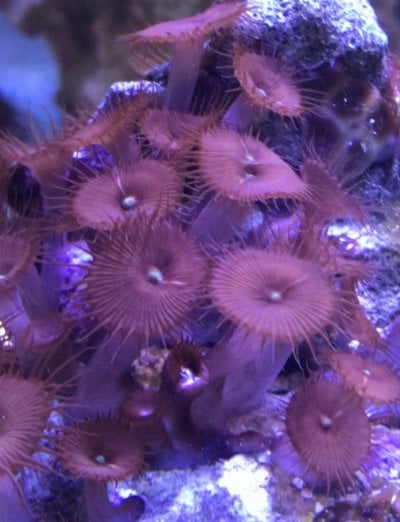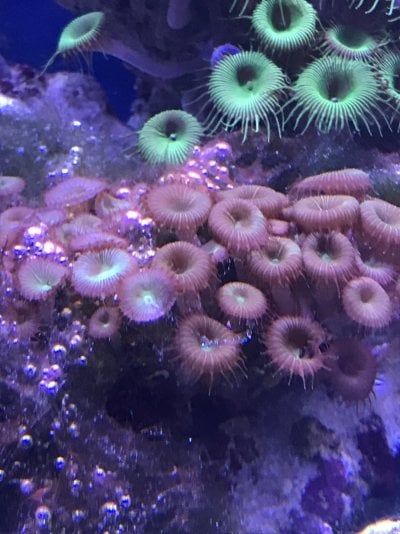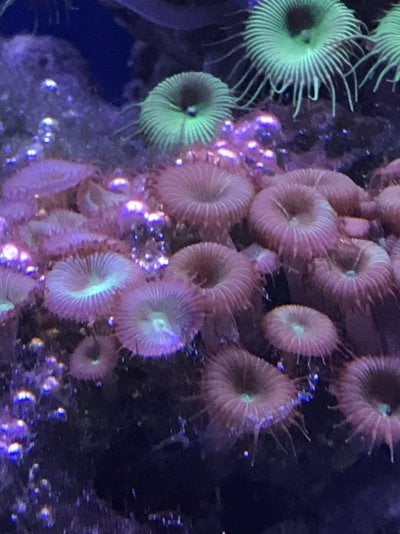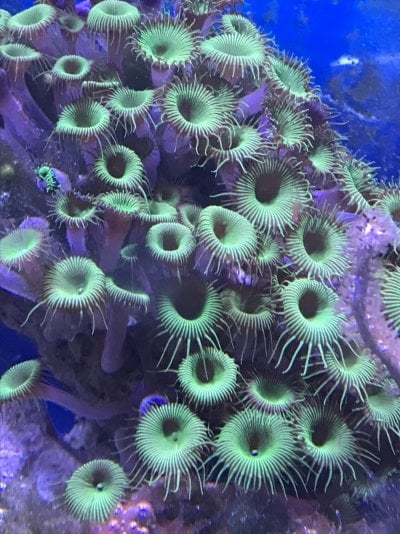Is it possible for Palythoas to “share” genetic material or colors with other types close by?
For example all of my brown palys looked like the first photo originally, I added greens (last photo) above them on a separate rock, then the browns closest to the greens slowly are turning green over the last 6-8 months or so! Not new heads but the existing ones are changing




For example all of my brown palys looked like the first photo originally, I added greens (last photo) above them on a separate rock, then the browns closest to the greens slowly are turning green over the last 6-8 months or so! Not new heads but the existing ones are changing























